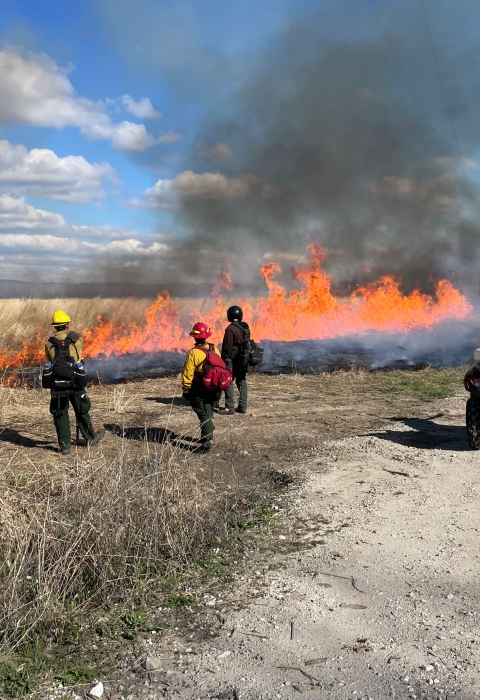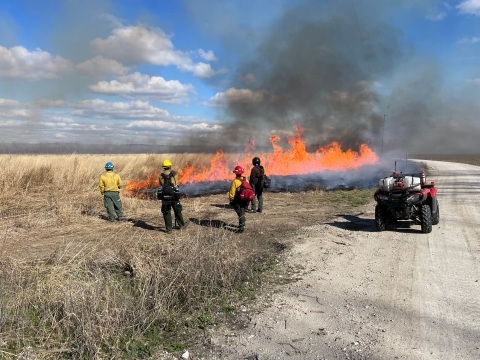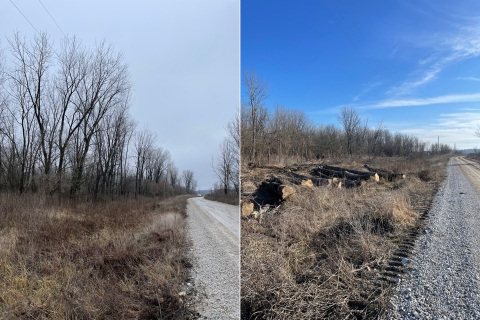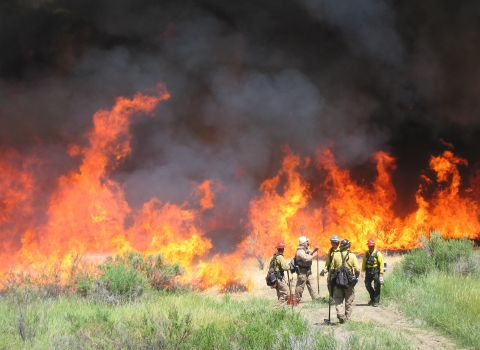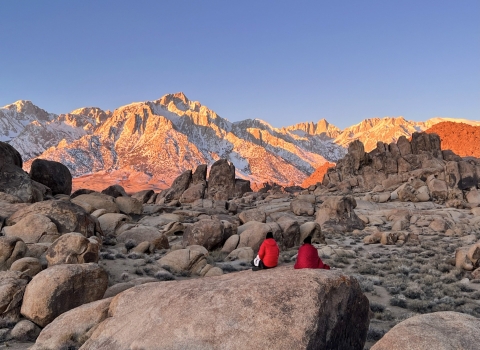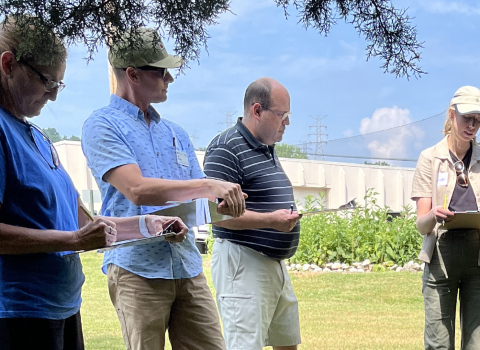Big Muddy National Fish and Wildlife Refuge in Missouri was filled with mud and fire this spring. We at the U.S. Fish and Wildlife Service know that to create a safer environment for people and plants, sometimes we have to add fire to the landscape. In 2024, we dedicated $10,000 to complete a big project that aims to help people and ecosystems live with fire. With the help of the local and broader community, refuge staff have been working hard to manage more than 500 acres of refuge lands, support the local economy and train in new fire professionals.
Like rain, fire is a good thing
Wildfires, like the one that passed through Wooldridge, Missouri in 2022, can be devastating news. But fire isn’t always bad. Some ecosystems use fire as an all-natural manicure to weed out non-native species and cycle in new nutrients. Though fire is often described as a villain, it can be a hero too. In fact, some landscapes need fire to survive. And some native seeds need heat to crack open and start new growth. Wildlife use burnt-out trees for habitat, and grasses use the nutrients that fire releases in the soils.
If fire is suppressed on a landscape that has been used to it, fuels like dead plants, can build up. If we want to avoid large wildfire outbreaks, these areas need a slower, more controlled release of energy. We can provide for that need by prescribing burns. Simultaneously, this removes excess fuels from the landscape and keeps catastrophic wildfires at bay.
In March 2024, refuge staff burned 565 acres, increasing fire resistance and offering relief to fire-dependent species. Like a medical team, we have staff who are dedicated to assessing the health of your public lands. Like physicians, these professionals sometimes prescribe fire when needed. This fire was more than medicine for the landscape, the burn treated both the local community and a national training center with resources to keep people employed. Once prescribed, how can fire be safely dispensed, and who can wield such a powerful tool for good?
A burn boss is born
These intentional fires require an experienced burn crew to make them successful. Even with careful preparation, members of a burn crews still face unexpected situations and have to make tough decisions. Each team member needs to practice their role under real conditions. That’s why a special training center exists to train in new burn bosses.
The National Interagency Prescribed Fire Training Center partnered with the refuge to use the prescribed 565-acre burn as experiential training for fire crews. The renowned training center blends real world prescribed burning experience with curriculum that covers foundational topics for prescribed fire practitioners. The center emphasizes providing prescribed fire experience for all members of the burn crew including burn bosses, firing bosses, engine bosses, squad bosses and fire effects monitors.
During the prescribed burn prescribed burn
A prescribed burn is the controlled use of fire to restore wildlife habitat, reduce wildfire risk, or achieve other habitat management goals. We have been using prescribed burn techniques to improve species habitat since the 1930s.
Learn more about prescribed burn , two firing bosses, a burn boss, an engine boss, and a fire-effects monitor were given the opportunity to practice their roles as trainees and experience the variety of effects that comes from real fire conditions.
A firebreak gives the local economy a break
Along with controlled burns, mechanical removal of hazardous fuels and firebreak installation are part of fire management on refuge lands. This year, with help of the Bipartisan Infrastructure Law Bipartisan Infrastructure Law
The Bipartisan Infrastructure Law (BIL) is a once-in-a-generation investment in the nation’s infrastructure and economic competitiveness. We were directly appropriated $455 million over five years in BIL funds for programs related to the President’s America the Beautiful initiative.
Learn more about Bipartisan Infrastructure Law and a local timber company, refuge staff completed proactive fuel reductions on an additional 8 acres that are adjacent to the 565-aacre prescribed burn. These 8 acres were fire damaged forest lands from the 2022 Wooldridge wildfire. Set too close to a public road and electric-utility infrastructure to safely prescribe a burn, the area was cleared manually instead.
The hazardous fuels removal and firebreak improvement measures cut a break for the community too. When the contracted timber company removed the fire damaged timber, they were able to sell the trees they had taken out to a local business. The local manufacturer buying the wood was, at the time, running dangerously low on the lumber necessary to create their product. Struggling to find the resources needed to keep the business running, the removal and selling of timber from the infrastructure project positively played into the local economy in unexpected ways.
Whether through direct environmental impact or economic impact, our agency works hard to identify and prioritize where our resources are needed most. We are happy to say that with funding from the Bipartisan Infrastructure Law, Big Muddy National Fish and Wildlife Refuge increased fire resilience, grew relationships within the local community and provided space needed to train future fire program leaders.
